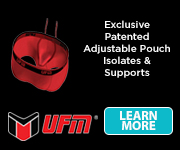How To Choose A Good Camping Bed
Camping can be a delightful escape into nature, providing a break from the routine and a chance to reconnect with the great outdoors. However, the enjoyment of your camping experience can significantly depend on how well you sleep. A good night's sleep is essential for maintaining energy levels and ensuring that you wake up refreshed and ready for adventure. Therefore, choosing the right camping bed is crucial. This guide will help you understand the different types of camping beds available, factors to consider when choosing one, and tips for maximizing comfort during your outdoor stay.
1. Types of Camping Beds
Air Mattresses
Advantages
Comfort: Air mattresses offer a high level of comfort, similar to a regular bed, as you can adjust the firmness by adding or releasing air.
Portability: They are compact when deflated, making them easy to transport and store.
Insulation: Air mattresses can provide good insulation from the ground if used with an insulating layer or thermal blanket.
Disadvantages
Durability: Air mattresses can be punctured or leak, which can be problematic in the field.
Setup: They require a pump (manual or electric) to inflate, adding to the setup time and gear you need to carry.
Weight: Some models can be heavy, making them less suitable for backpacking.
Foam Sleeping Pads
Advantages
Durability: Foam pads are robust and can withstand rough use without the risk of punctures.
Weight: They are lightweight, making them ideal for backpackers.
Insulation: Closed-cell foam pads provide excellent insulation from the cold ground.
Disadvantages
Comfort: Foam pads are generally less comfortable than air mattresses, providing minimal cushioning.
Bulkiness: Even though they are lightweight, foam pads can be bulky to pack.
Self-Inflating Pads
Advantages
Ease of Use: These pads combine air and foam and self-inflate by opening a valve, requiring minimal effort.
Comfort: They offer a good balance of comfort and insulation.
Portability: They pack down smaller than traditional foam pads and are easier to carry.
Disadvantages
Weight: They can be heavier than simple foam pads.
Durability: There is a risk of puncture or valve failure, although they are typically more robust than pure air mattresses.
Camping Cots
Advantages
Comfort: Cots elevate you off the ground, providing a more bed-like sleeping experience and better support.
Versatility: They can double as seating during the day and are great for keeping you dry in wet conditions.
Disadvantages
Weight and Size: Cots are bulky and heavy, making them more suitable for car camping than backpacking.
Setup: They require assembly, which can be time-consuming and tricky, especially in the dark.
Hammocks
Advantages
Lightweight: Hammocks are very light and packable, ideal for minimalist camping.
Versatile: They can be set up almost anywhere there are trees, and some models come with integrated bug nets and rain flies.
Disadvantages
Comfort: Sleeping in a hammock can be less comfortable for side sleepers or those who move a lot during sleep.
Setup: Requires suitable trees or anchors and can be challenging to set up for beginners.
2. Factors to Consider When Choosing a Camping Bed
Comfort
Comfort is subjective and depends on personal preference. Consider how you sleep at home and look for a camping bed that can mimic that experience. If you prefer a firm mattress, foam pads might be suitable. If you like softness, an air mattress could be better.
Insulation
Insulation is crucial, especially for camping in colder climates. The ground can draw heat away from your body, so a bed with good insulating properties is essential. Foam pads and self-inflating pads generally offer better insulation than air mattresses.
Portability
Think about how you will be transporting your Camping bed. If you are backpacking, weight and size are critical factors. For car camping, you can afford to choose a bulkier, heavier bed for added comfort.
Durability
Consider the terrain and conditions you will be camping in. Durability is vital if you're camping on rocky or uneven ground. Foam pads are usually the most durable, while air mattresses and self-inflating pads require more careful handling.
Ease of Setup
The ease of setup can significantly affect your camping experience, especially after a long day of hiking. Self-inflating pads and foam pads are typically the quickest and easiest to set up. Air mattresses and cots might require more time and effort.
Budget
Camping beds come in a range of prices. While it's tempting to go for the cheapest option, investing in a quality bed can enhance your comfort and ensure it lasts longer. Consider your budget but balance it with the features you need.
Sleeping Position
Your sleeping position can influence the type of Camping bed you choose. Side sleepers may prefer thicker, more cushioned options like air mattresses or self-inflating pads. Back sleepers might find foam pads sufficient.
Temperature Rating
Some camping beds come with a temperature rating, indicating the lowest temperature they are suitable for. This is particularly important for winter camping. Ensure the bed you choose matches the conditions you expect to encounter.
3. Tips for Maximizing Comfort
Use a Pillow
A good pillow can significantly enhance your comfort. Some camping beds come with built-in pillows, but you might prefer to bring your own or use a camping-specific pillow designed for portability.
Add a Blanket or Sleeping Bag
Even with a good camping bed, a high-quality sleeping bag or blanket is essential. Choose one with the appropriate temperature rating for the conditions. Consider layering with a thermal blanket for added warmth.
Choose the Right Location
Setting up your bed on a level, dry surface can improve comfort and ensure a better night's sleep. Avoid rocky, uneven ground and clear away any debris before setting up.
Consider an Insulating Layer
For colder climates, adding an insulating layer between your bed and the ground can help. This could be a thermal blanket, reflective emergency blanket, or additional foam pad.
Adjust to the Right Firmness
If using an air mattress or self-inflating pad, adjust the firmness to your liking. Too much or too little air can affect comfort and support.
Elevate Your Head
If you're using a camping cot or hammock, ensure your head is slightly elevated. This can help with comfort and improve breathing, reducing the chances of discomfort during the night.
Practice Setting Up
Before your trip, practice setting up your Camping bed at home. This ensures you are familiar with the process and can quickly set up your bed in the dark or adverse conditions.
Keep Your Bed Clean
Dirt and debris can affect the comfort and longevity of your camping bed. Use a groundsheet or tarp under your bed and clean it regularly to maintain its condition.
4. Reviews of Popular Camping Beds
Therm-a-Rest NeoAir XTherm
Features
Type: Air Mattress
Weight: 1 lb 4 oz (Regular size)
R-Value: 6.9 (Excellent insulation)
Pros
High warmth-to-weight ratio
Compact and easy to pack
Durable construction
Cons
Expensive
Requires an air pump or manual inflation
REI Co-op Camp Bed Self-Inflating Sleeping Pad
Features
Type: Self-Inflating Pad
Weight: 4 lbs 6 oz
R-Value: 7.6 (Great for cold weather)
Pros
Comfortable and well-insulated
Easy to inflate and deflate
Durable
Cons
Heavy and bulky for backpacking
Higher price point
Coleman ComfortSmart Camping Cot
Features
Type: Camping Cot
Weight: 19 lbs
Dimensions: 69 x 25 x 15 inches
Pros
Very comfortable with a coil suspension system
Durable and sturdy
Easy to set up
Cons
Heavy and bulky
Not suitable for backpacking
Klymit Static V Sleeping Pad
Features
Type: Air Mattress
Weight: 18.1 oz
R-Value: 1.3 (Minimal insulation)
Pros
Lightweight and compact
Affordable
Easy to inflate and deflate
Cons
Limited insulation
Not as durable as other options
ENO DoubleNest Hammock
Features
Type: Hammock
Weight: 19 oz
Dimensions: 9' 4" x 6' 2"
Pros
Lightweight and portable
Comfortable for lounging and sleeping
Durable and easy to set up
Cons
Requires suitable trees or anchors
Can be less comfortable for side sleepers
Choosing the right Camping bed involves understanding your needs and preferences, considering factors like comfort, insulation, portability, and ease of setup. Whether you opt for an air mattress, foam pad, self-inflating pad, camping cot, or hammock, the key is to find a balance that suits your Camping style and the conditions you'll encounter. By following the tips and recommendations in this guide, you can ensure a restful and enjoyable night's sleep on your camping adventures, leaving you refreshed and ready to explore the great outdoors.
About the Author: Earnest Sherrill
Earnest Sherrill is a passionate outdoor enthusiast and writer who resides in the warm and breezy state of Texas. With a deep love for nature, Earnest enjoys exploring the great outdoors and sharing his experiences through his writing. He writes about various aspects of outdoor life and the intriguing happenings of everyday experiences. When not writing, Earnest cherishes spending time with his youngest grandchildren, who bring vibrant energy and robust attitudes to his life. Stay connected with Earnest to discover more about the wonders of the outdoors and the joys of life's adventures.
Other Projects
Subscribe
Subscribing will enable you to get regular notifications about new postings...

Refer a friend and earn $10 at Atlanta Cutlery Corp.



